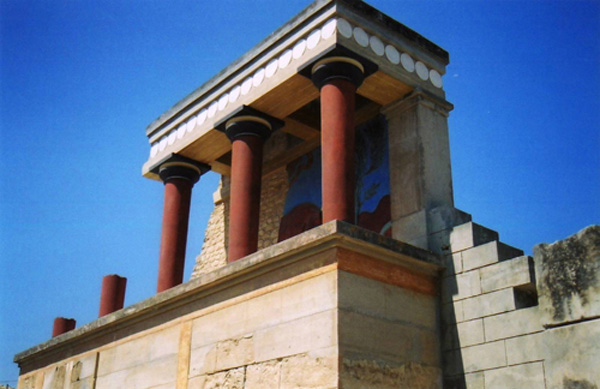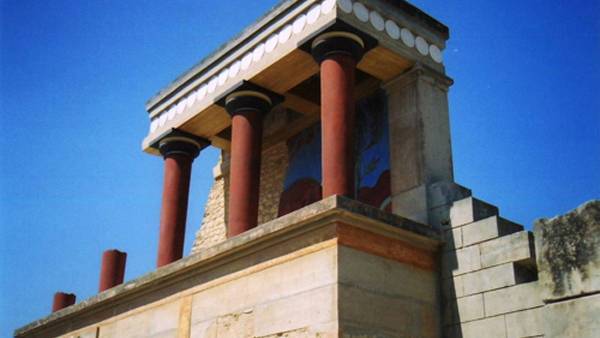Minoan Civilization and the Birth of European Art
Source: brusselsjournal.com

Interesting things happened in Europe long before the Greeks and the Romans. Prior to 5000 BC the inhabitants of the Lower Danube Valley and the Balkan foothills farmed, built sizable towns and mastered large-scale copper smelting. At its peak by 4500 BC, says Professor David W. Anthony, “Old Europe was among the most sophisticated and technologically advanced places in the world.” Admiring their colorful ceramics, a specialist in Egyptian archaeology remarked that at such an early time “Egyptians were certainly not making pottery like this.” The Spondylus shell from the Aegean Sea was a special item of trade in the region.
Over a wide area of what is now Bulgaria, Romania and Moldova, people settled into villages of single- and multiroom houses crowded inside palisades. In 1972 Bulgarian archaeologists discovered 310 graves dated to before 4000 BC, some of them containing numerous pieces of gold ornaments. In fact, Varna in eastern Bulgaria is the oldest cemetery yet found in the world where humans were buried with golden ornaments. The arrival of peoples from the Ukraine and the steppes north of the Black Sea, possibly including the original speakers of Proto-Indo-European, may have contributed to the final collapse of this culture after 3500 BC.
As Philip L. Kohl shows in The Making of Bronze Age Eurasia, the cemeteries of southeast Europe are exceptionally rich in archaeological materials from the sixth- and fifth-millennia, arguably more complete than in any other area of the world. Significant settlements emerged in fifth millennium BC, with roots back to the Neolithic era before 5000 BC. Some of these were extremely large, inhabited before the Sumerian city-states and sometimes larger than the latter in overall size, yet there is little evidence for specialization or internal social differentiation in the form of political hierarchies. In short, these were not “cities,” merely large settlements, and Kohl points out that we should be careful with applying the term “civilization” to them. They had apparently not achieved literacy, and while a few of these societies may have approached the threshold to state organization they never crossed it.
Although the Incas in South America are sometimes described as a “civilization without writing,” most historians are reluctant to use that term for non-literate cultures. If we limit ourselves to urban, literate cultures then the first true European civilization we possess evidence of appeared on the island of Crete in the eastern Mediterranean more than four thousand years ago. The erection of the first palace-centers and the appearance of large towns took place there around 2200-2000 BC. The peak of their civilization came between 2000-1600 BC. The inhabitants created a sophisticated, thriving society with royal courts, large-scale architecture, cities and towns, and above all magnificent works of art. Their earliest writing system, pictographic or hieroglyphic, appeared before 2000 BC. By the 1700s they had adopted another kind of script, Linear A, which so far remains undeciphered. A third script called Linear B was adopted from the 1400s BC by the invading Mycenaean Greeks.
If the stories about the famous Trojan War reflect inflated memories of a real event, which remains unproven, then it likely happened shortly after 1200 BC. According to legend, it started when the beautiful Helen of Troy was abducted by Paris, son of the Trojan king. The war lasted a decade with a fruitless siege of Troy until the Greeks pretended to withdraw and left behind a large wooden horse with warriors concealed inside, a “Trojan horse.” It was adopted as a victory trophy by the celebrating Trojans, but warriors crept out of it at night and opened the gates, leading to the fall of the city. Achilles was the greatest warrior of the Trojan War until he was killed by a poisoned arrow shot into his heel. One of the tales of his childhood relates that he was once dipped in the waters of the River Styx, which in Greek mythology formed the boundary between the living and the Underworld (Hades). Because of this he became invulnerable except for the heel by which he was held, his only weak point.
Read the rest of the article: here






















